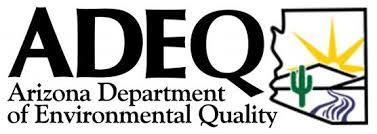The Arizona Department of Environmental Quality (ADEQ), the state agency responsible for protecting and enhancing public health and the environment of Arizona, said Oct. 7 the state is struggling to meet new federal ozone standards.
Earlier this month, the U.S. Environmental Protection Agency (EPA) announced a lower ozone standard of 0.070 parts per million. That change “presents a major challenge” for Arizona to achieve based on its unique geographic, meteorological, and mix of emissions sources, according to Eric Massey, division director at the ADEQ.
For instance, Arizona’s geographical location plays a significant role in ozone formation and levels.
"[A]ir pollution does not recognize political boundaries,” Massey said.
Massey added that Arizona is also well known for its sunshine, which is a critical contributor to ozone creation.
ADEQ and its partners currently monitor ozone concentrations in 10 of Arizona’s 15 counties, including Cochise, La Paz, Maricopa, Navajo, Pima and Yuma. According to the EPA, many counties already see ozone levels below 70 parts per billion on most days; however, nine of Arizona’s 10 monitored counties report ozone levels in excess of EPA’s new standard too frequently.
Navajo is the only county that is consistently in compliance with the new standard, according to the ADEQ.
Arizona has one year to recommend air quality classifications to the EPA, and ADEQ will define boundaries for areas that do not meet the new ozone standard using data from 2013 through 2015.
“ADEQ expects to begin a public stakeholder process in January 2016,” Massey said. “In 2017, EPA will use information we provide to make final decisions, following which ADEQ will be required to develop and implement plans to improve air quality in any area designated as not meeting the standard.”
Massey also noted that air quality in Phoenix and across the state “is much better today than 40 years ago.”
In fact, during the last five years, levels of every air pollutant, including ozone, have been stable or improved despite continued population growth.
“That being said, there are a number of things people can do to help make the air healthier to breathe,” Massey said.

